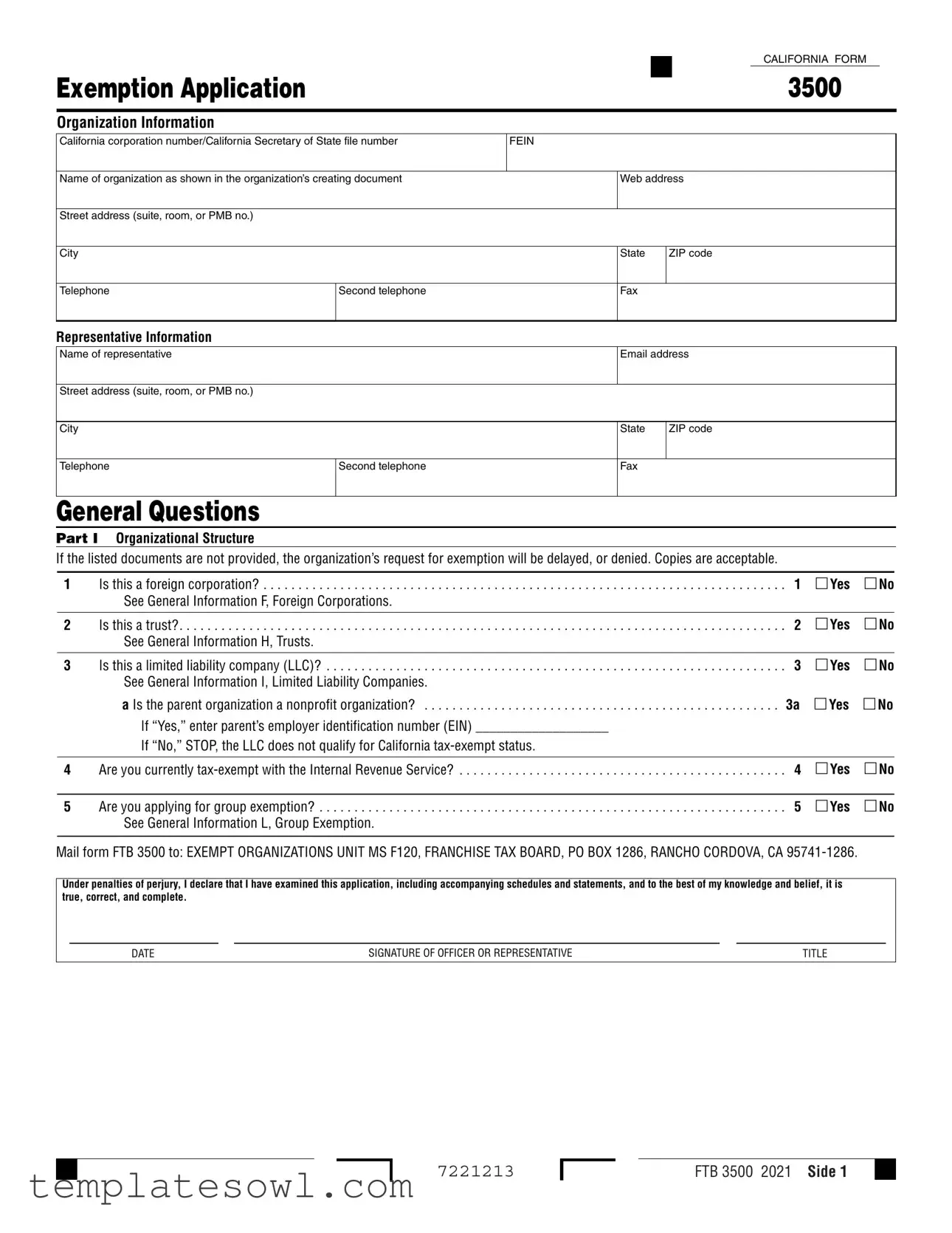What is the California Form 3500?
The California Form 3500 is an application used by organizations to apply for tax-exempt status in California. This form is essential for nonprofits, foreign corporations, trusts, and limited liability companies that wish to be recognized as tax-exempt under California law. Completing this form accurately is crucial for the organization to avoid delays or denial of their exemption request.
Who needs to fill out Form 3500?
Any organization seeking tax-exempt status in California must complete Form 3500. This includes but is not limited to nonprofit corporations, trusts, foreign corporations, and limited liability companies (LLCs). If an organization does not fall into one of these categories or does not meet the necessary requirements, they should not submit the application.
What information is required to complete Form 3500?
Form 3500 requires a variety of details. This includes the organization's name, address, contact information, organizational structure, a narrative of activities, financial data, and details about officers and directors. The organization must also provide copies of any relevant documents. Failing to provide required documents can result in delays.
How does an organization prove its tax-exempt status?
To establish tax-exempt status, the organization must demonstrate that its mission aligns with the criteria set forth in the California Revenue and Taxation Code. This typically involves outlining the organization’s activities and explaining how they further the exempt purposes. Stability in financial reporting and compliance with previous tax filings also bolsters the application.
What if the organization is already tax-exempt with the Internal Revenue Service?
If an organization holds tax-exempt status from the IRS, they can indicate this on the Form 3500. Obtaining federal tax-exempt status is a vital step that can significantly support the application for state-level tax exemption. However, the organization must still comply with California-specific requirements to obtain exemption in the state.
What are the consequences of providing false information on Form 3500?
Falsifying information on Form 3500 can lead to severe repercussions, including legal penalties, revocation of tax-exempt status, and potential criminal charges. The form includes a declaration stating that the information is true and complete to the best of the signer's knowledge, thus emphasizing the importance of honesty in the application process.
Where should Form 3500 be mailed once completed?
Once the organization has filled out Form 3500, it should be mailed to the Exempt Organizations Unit at the Franchise Tax Board. The address is P.O. Box 1286, Rancho Cordova, CA 95741-1286. Ensuring that the form reaches the correct department is vital for timely processing and review.
How long does it take to process Form 3500?
The processing time for Form 3500 can vary based on a number of factors, including the completeness of the application and the current workload of the Franchise Tax Board. Generally, organizations should anticipate several weeks to a few months for their application to be reviewed. It’s advisable to follow up if there are delays beyond the expected time frame.










